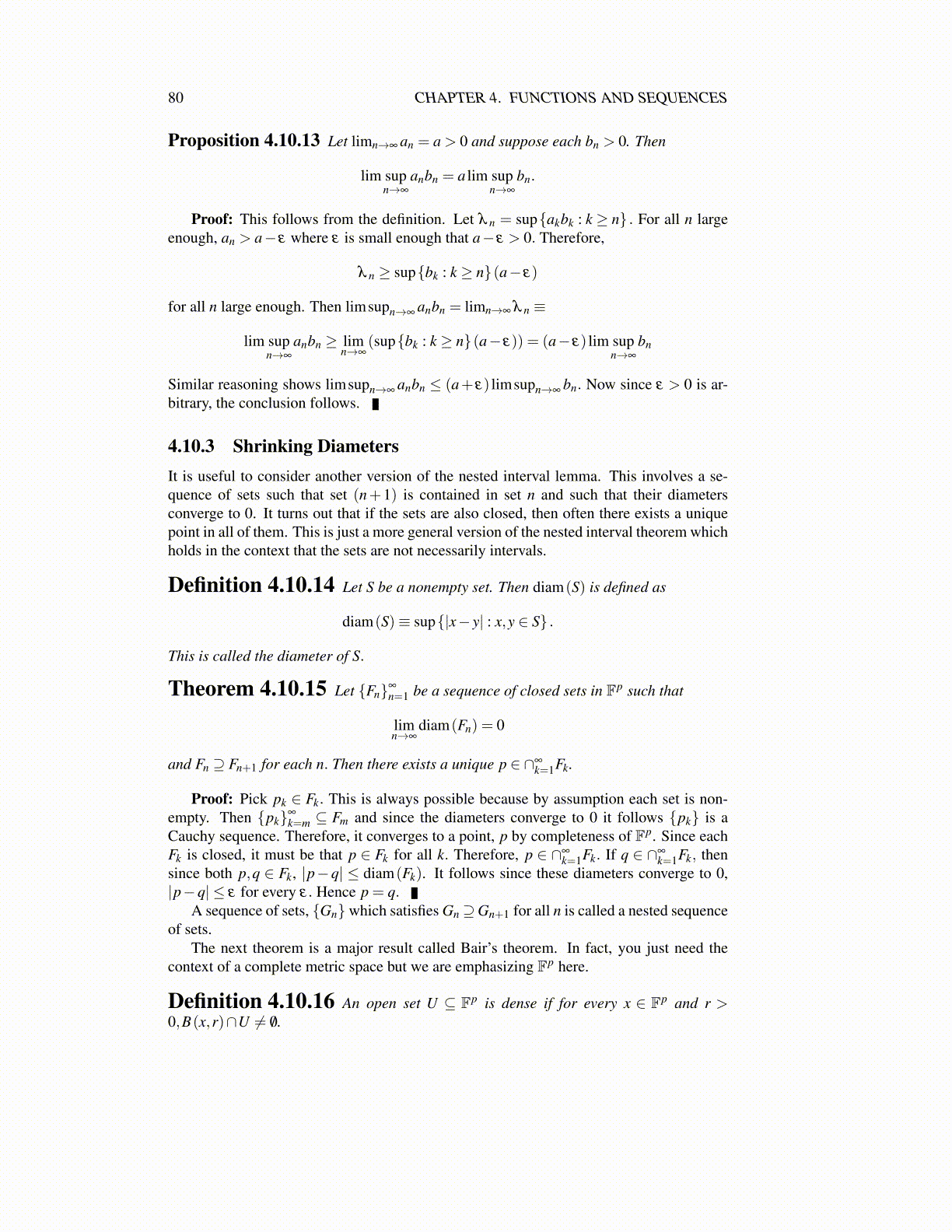
80 CHAPTER 4. FUNCTIONS AND SEQUENCES
4.12 Exercises1. Suppose x = .3434343434 where the bar over the last 34 signifies that this repeats
forever. In elementary school you were probably given the following procedure forfinding the number x as a quotient of integers. First multiply by 100 to get 100x =34.34343434 and then subtract to get 99x = 34. From this you conclude that x =
34/99. Fully justify this procedure. Hint: .34343434 = limn→∞ 34∑nk=1( 1
100
)know
use Problem 7 on Page 64.
2. Let a ∈ [0,1]. Show a = .a1a2a3... for some choice of integers in {0,1,2, · · · ,9},a1,a2, · · · if it is possible to do this. Give an example where there may be more thanone way to do this.
3. Show every rational number between 0 and 1 has a decimal expansion which eitherrepeats or terminates.
4. Using Corollary 3.2.5, show that there exists a one to one and onto map θ from thenatural numbers N onto Q, the rational number. Denoting the resulting countable setof numbers as the sequence {rn} , show that if x is any real number, there exists asubsequence from this sequence which converges to that number.
5. A number has decimal expansion .01001000100001000001· · · . Show this is an irra-tional number.
6. Prove√
2 is irrational. Hint: Suppose√
2 = p/q where p,q are positive integers andthe fraction is in lowest terms. Then 2q2 = p2 and so p2 is even. Explain why p = 2rso p must be even. Next argue q must be even.
7. Show that between any two integers there exists an irrational number. Next showthat between any two numbers there exists an irrational number. You can use the factthat√
2 is irrational if you like.
8. Let a be a positive number and let x1 = b > 0 where b2 > a. Explain why there existssuch a number, b. Now having defined xn, define xn+1 ≡ 1
2
(xn +
axn
). Verify that
{xn} is a decreasing sequence and that it satisfies x2n ≥ a for all n and is therefore,
bounded below. Explain why limn→∞ xn exists. If x is this limit, show that x2 = a.Explain how this shows that every positive real number has a square root. This is anexample of a recursively defined sequence. Note this does not give a formula for xn,just a rule which tells how to define xn+1 if xn is known.
9. Let a1 = 0 and suppose that an+1 =9
9−an. Write a2,a3,a4. Now prove that for all n,
it follows that an ≤ 92 +
32
√5. Find the limit of the sequence. Hint: You should prove
these things by induction. Finally, to find the limit, let n→∞ in both sides and arguethat the limit a, must satisfy a = 9
9−a .
10. If limn→∞ an = a, does it follow that limn→∞ |an|= |a|? Prove or else give a counterexample.
11. Show limn→∞n5
1.01n = 0, limn→∞100n
n! = 0.